
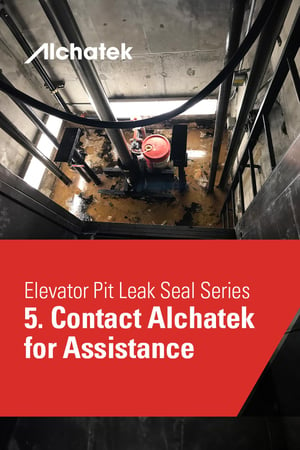 Addressing the complexities of hydraulic elevator pit repairs requires more than just a superficial understanding of the issue. It necessitates a deep dive into the technical aspects and an experienced hand to guide the process. In this realm, Alchatek emerges as a beacon of expertise and support for property owners and managers.
Addressing the complexities of hydraulic elevator pit repairs requires more than just a superficial understanding of the issue. It necessitates a deep dive into the technical aspects and an experienced hand to guide the process. In this realm, Alchatek emerges as a beacon of expertise and support for property owners and managers.
Technical Guidance
Guidance from experienced specialists provides major advantages when dealing with complex elevator pit leaks. The right partner will have technical knowledge and practical experience addressing infrastructure challenges in buildings. Property owners can benefit from their expertise in accurately diagnosing issues, devising customized sealing solutions, and preventing future leaks through proactive maintenance plans. This thoughtful approach can save major time, disruption, and costs compared to quick fixes or generic solutions.
Contractor Referral
An experienced referral partner can provide significant advantages by connecting property owners with qualified elevator pit leak contractors. Matching project needs with specialist experience and enforcement of high standards ensures repairs are done right the first time. Efficient access to customized solutions secures effective long-term fixes and avoids unnecessary costs from trial and error. Strategic contractor referrals pave the way for safe, quality-focused leak repair.
Long-Term Partnership
Partnering with Alchatek for elevator pit repair projects goes beyond just solving an immediate problem. It ensures that the repair process is guided by expert knowledge and executed by skilled professionals. The additional benefit of Alchatek's involvement lies in its commitment to cost-effective and environmentally safe solutions, aligning with the broader goals of property management in terms of sustainability and financial viability.
Call 404-618-0438 or fill out this form to contact Alchatek today!
Addressing the complexities of hydraulic elevator pit repairs requires more than just a superficial understanding of the issue. It necessitates a deep dive into the technical aspects and an experienced hand to guide the process. In this realm, Alchatek emerges as a beacon of expertise and support for property owners and managers.
Technical Guidance
Guidance from experienced specialists provides major advantages when dealing with complex elevator pit leaks. The right partner will have technical knowledge and practical experience addressing infrastructure challenges in buildings. Property owners can benefit from their expertise in accurately diagnosing issues, devising customized sealing solutions, and preventing future leaks through proactive maintenance plans. This thoughtful approach can save major time, disruption, and costs compared to quick fixes or generic solutions.
Contractor Referral
An experienced referral partner can provide significant advantages by connecting property owners with qualified elevator pit leak contractors. Matching project needs with specialist experience and enforcement of high standards ensures repairs are done right the first time. Efficient access to customized solutions secures effective long-term fixes and avoids unnecessary costs from trial and error. Strategic contractor referrals pave the way for safe, quality-focused leak repair.
Long-Term Partnership
Partnering with Alchatek for elevator pit repair projects goes beyond just solving an immediate problem. It ensures that the repair process is guided by expert knowledge and executed by skilled professionals. The additional benefit of Alchatek's involvement lies in its commitment to cost-effective and environmentally safe solutions, aligning with the broader goals of property management in terms of sustainability and financial viability.
Call 404-618-0438 or fill out this form to contact Alchatek today!




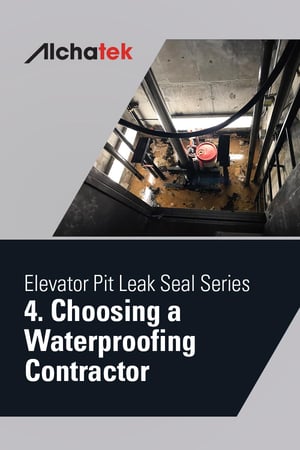 Polyurethane grout leak repair projects in elevator pits require specific skills and knowledge. A qualified contractor not only addresses current issues but also helps prevent future problems, ensuring the longevity and safety of your elevator system.
Polyurethane grout leak repair projects in elevator pits require specific skills and knowledge. A qualified contractor not only addresses current issues but also helps prevent future problems, ensuring the longevity and safety of your elevator system.
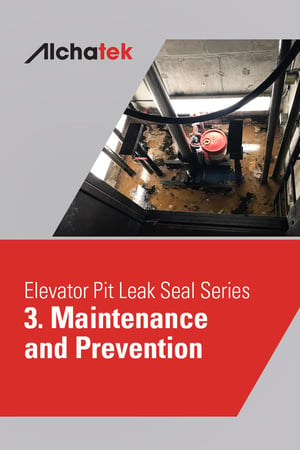 Neglecting regular maintenance can lead to several problems, besides corrosion, including water accumulation, which, when mixed with oil from hydraulic elevators, creates an environmental hazard and necessitates costly specialized removal. Regular maintenance not only prevents these issues but also extends the life of the elevator system and ensures compliance with safety regulations. It is also key to early leak detection and timely implementation of polyurethane leak seal projects when necessary.
Neglecting regular maintenance can lead to several problems, besides corrosion, including water accumulation, which, when mixed with oil from hydraulic elevators, creates an environmental hazard and necessitates costly specialized removal. Regular maintenance not only prevents these issues but also extends the life of the elevator system and ensures compliance with safety regulations. It is also key to early leak detection and timely implementation of polyurethane leak seal projects when necessary.
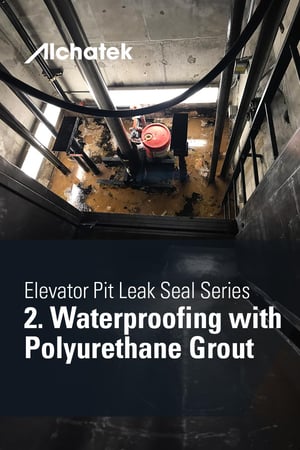 Following the previous discussion on the risks associated with water leakage in hydraulic elevator pits, this section focuses on an effective solution: polyurethane grout. Polyurethane grout is a highly efficient material used in construction for sealing and waterproofing. Its unique properties make it an ideal choice for addressing the issue of water leakage in elevator pits.
Following the previous discussion on the risks associated with water leakage in hydraulic elevator pits, this section focuses on an effective solution: polyurethane grout. Polyurethane grout is a highly efficient material used in construction for sealing and waterproofing. Its unique properties make it an ideal choice for addressing the issue of water leakage in elevator pits.
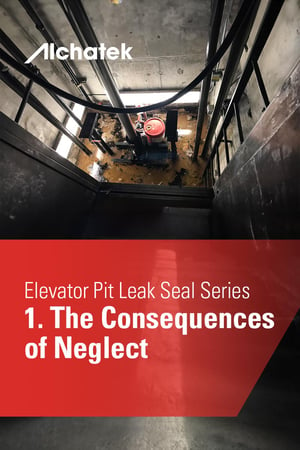 In the world of commercial and industrial buildings, hydraulic elevators are a common fixture. Integral to these systems are elevator pits, located at the bottom of the elevator shaft. They house important components that facilitate the elevator's movement. While often overlooked, these pits are vital for the smooth operation and safety of the elevator system.
In the world of commercial and industrial buildings, hydraulic elevators are a common fixture. Integral to these systems are elevator pits, located at the bottom of the elevator shaft. They house important components that facilitate the elevator's movement. While often overlooked, these pits are vital for the smooth operation and safety of the elevator system.
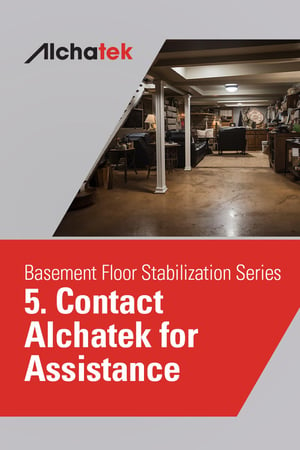 Your home is more than just a structure; it's a sanctuary, a place where memories are made and cherished. Ensuring its stability and safety is paramount. If you've noticed cracks, unevenness, or other signs of instability in your basement floor, it's time to take action.
Your home is more than just a structure; it's a sanctuary, a place where memories are made and cherished. Ensuring its stability and safety is paramount. If you've noticed cracks, unevenness, or other signs of instability in your basement floor, it's time to take action.


 Your home's basement floor serves as an integral component of the structure, playing a pivotal role in maintaining the overall stability and integrity of the house. However, like all parts of a home, it's subject to wear and tear, and there are times when it might need professional attention. Recognizing these moments is crucial not just for the health of the structure but also for the safety of its inhabitants.
Your home's basement floor serves as an integral component of the structure, playing a pivotal role in maintaining the overall stability and integrity of the house. However, like all parts of a home, it's subject to wear and tear, and there are times when it might need professional attention. Recognizing these moments is crucial not just for the health of the structure but also for the safety of its inhabitants.

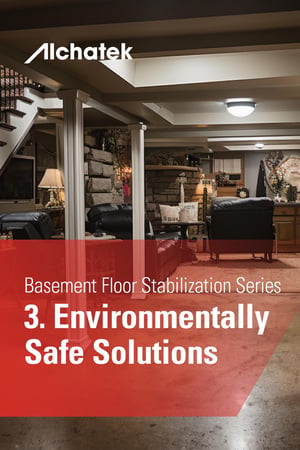 Ensuring the stability of your basement floor is an imperative task for every homeowner. Yet, in our pursuit of a sturdy home, it is crucial not to overlook the environmental ramifications of repair materials and methods. Balancing these dual responsibilities can be challenging, but with informed choices, homeowners can achieve both goals seamlessly.
Ensuring the stability of your basement floor is an imperative task for every homeowner. Yet, in our pursuit of a sturdy home, it is crucial not to overlook the environmental ramifications of repair materials and methods. Balancing these dual responsibilities can be challenging, but with informed choices, homeowners can achieve both goals seamlessly.
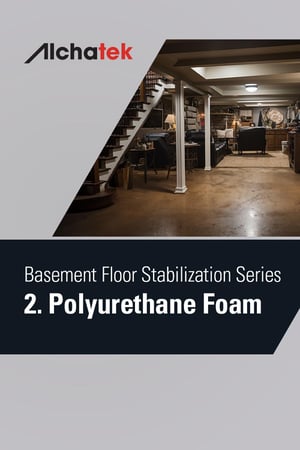 The basement, being one of the most vital components of a home, requires solutions that are both efficient and long-lasting when it comes to addressing unstable floor slab issues. Traditional methods of repair, although effective, can often be invasive, time-consuming, and expensive. Enter polyurethane foam—a revolutionary solution to basement floor slab stability issues.
The basement, being one of the most vital components of a home, requires solutions that are both efficient and long-lasting when it comes to addressing unstable floor slab issues. Traditional methods of repair, although effective, can often be invasive, time-consuming, and expensive. Enter polyurethane foam—a revolutionary solution to basement floor slab stability issues.
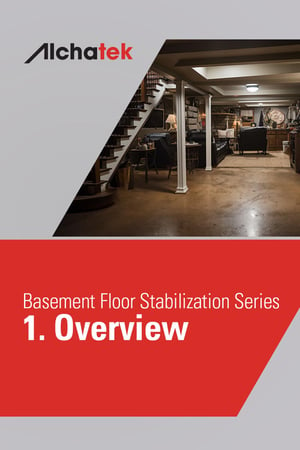 For many homeowners, a basement represents more than just a foundation—it's an extension of their living space, a storage haven, or even a cozy retreat. Ensuring the structural integrity and safety of your basement is paramount, not just for the sake of the basement itself but for the overall health and well-being of your home and its inhabitants. The basement floor is a critical component that plays a significant role in ensuring your basement is dry, stable, and safe.
For many homeowners, a basement represents more than just a foundation—it's an extension of their living space, a storage haven, or even a cozy retreat. Ensuring the structural integrity and safety of your basement is paramount, not just for the sake of the basement itself but for the overall health and well-being of your home and its inhabitants. The basement floor is a critical component that plays a significant role in ensuring your basement is dry, stable, and safe.